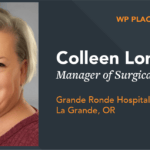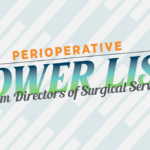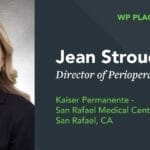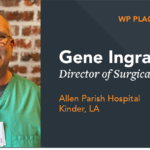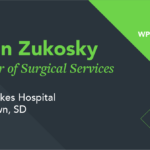ASCs vs. Hospitals: Protecting Inpatient Spaces During COVID
In the early days of the COVID pandemic, the Directors of Surgical Services who managed both a hospital and an ASC (Ambulatory Surgical Center) were placed in a unique position. They had choices that their counterparts in charge of just one type of facility did not have. How were decisions made for “edge cases” during the peak of the pandemic, especially when it was uncertain when a vaccine would come into play? We spoke with directors that faced those very challenges and share the solutions that worked best.
A Game of Tetris
Working in one of the states with the strictest shutdowns, Mara Rosalsky, Executive Director of Perioperative Services at the University of California, Irvine, decided to move overnight and complicated outpatient cases out of their main OR and into their HOPD (Hospital Outpatient Department). The reason: those patients could spend their recovery in the outpatient department without burdening inpatient resources. At the same time, outpatient cases that would turn over quickly were sent back to the main OR to maintain volume.
“We definitely had to be proactive and evaluate the number of people in the ICU and put limits in the main OR,” Rosalsky says. “We evaluated our inpatient resources, the number of ventilators, and built the OR schedule around that. When we had 12 vented COVID patients, we would reduce our ICU OR demand to six per day. When we had 24 vented COVID patients, we went down to four ICU ORs per day.”
At one point, they had 187 COVID patients, which forced them to limit OR capacity to 75%. Then when California mandated in January that only life-threatening cases could be processed in the OR, their volume plummeted.
They have also seen the effect that avoiding ORs due to COVID has had on patients.
“Some are having more complicated hospital stays as a result of deferring their medical treatment plans,” Rosalsky says.
Like many facilities across the country, a backlog of cases was waiting for them once restrictions were lifted. In response, Rosalsky implemented what she calls a “Pathway of COVID recovery.” For the HOPD, they evaluated how many patients needed to be seen to generate an OR case, identified the backlog of cases and which ones had been deferred, and how many they were actively working on. They then reviewed the budget and set targets; for instance, ophthalmology would need to schedule 83 surgeries a week. They also decided to target 105% of their budgeted volume to stay on track, which has had a positive impact on revenue capture.
“We’ve extended our hours, running more rooms later in the day, and expanded our elective schedule on Saturdays, and began doing elective surgeries on Sundays,” Rosalsky says. “It’s all about creating capacity and creating a culture of ‘just take that extra case’ even if it goes past 6 p.m.”
In looking at the scheduling patterns of the surgeons, Rosalsky also found that close to 40% of cases were overbooked. They would have four hours of block time on the schedule, but only use half that time, leaving the room empty for two hours.
“Our main goal was to focus on expanding assets to get patients with the highest needs taken care of to avoid patients developing more complicated recovery courses.”
Planning for the Worst-Case Scenario
Scott Collie, Director of Surgical Services at Winchester Medical Center in Winchester, VA, oversees their on-campus ASC and the main OR. Once COVID numbers began to inflate in their area, the units inside the hospital that had been turned into COVID units quickly filled up. In planning ahead to avoid running out of room, Collie says they decided to close their ASC and repurpose it as a HIRU (high-intensity respiratory unit). The plan would be to take COVID patients that were almost ready for discharge and cohort them in the HIRU.
ASC staff either took time off or were reassigned to the main OR where they performed their outpatient cases in dedicated rooms.
“Shutting down the ambulatory center was quite disruptive to staff,” Collie says. “But we needed a potential space to overflow. Fortunately, we never got to that tipping point where we had to use the HIRU. It really would have been the last resort because their recovery area is like an open ward. But we were prepared to do it.”
When they re-opened the surgery center but were still relegated to urgent/emergent cases, they floated staff system-wide to the areas they were needed to fill in the gaps of real need and preserve labor hours.
“Some became contact tracers for the health department, others became clean runners for nurses on the COVID units who couldn’t go in and out of rooms once they had their PPE on,” Collie says.
In March of this year, they returned to full capacity but ran into another challenge: the huge backlog of surgeries that ran the risk of overloading an already strained inpatient workforce. Collie says they had to be thoughtful about how many surgeries per day would require an inpatient bed. Inpatient leadership and surgical services leadership collaborated to agree on how many beds they could fill on any given day.
“The group of surgeons we had helping us with this was very engaged and understanding of the process, offered great feedback, and constructive criticism when it was due,” Collie says. “Our main goal is to take great care of our patients and they understood that if there’s not a bed to put their patient in, there’s no point in doing the surgery. People listened to each other and I think that process helped to break down some of the silos organizations sometimes find themselves in.”
